New Arrivals Spark Excitement!
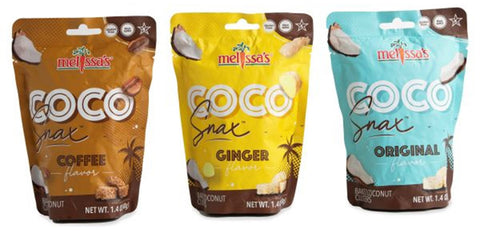
Coco Snax™
The perfect snack! These tiny, crunchy coconut snacks are great for on-the-go, lunch boxes or just a quick treat. Not only are they delicious, but they are also gluten-free! Available in three new flavors: original, ginger and coffee.
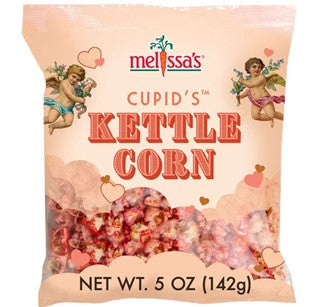
Cupid’s Kettle Corn
Not a fruit, but definitely worth mentioning! Our latest and greatest treat for February: Pink and Red Kettle Corn with Bubble Gum and Cherry Flavors! YUM!
Enjoy this as a snack, but you can also get creative and toss it into fruit salads, make it into a ball by melting marshmallows and carefully molding it into a ball. Give it as a sweet gift or bring it to the office to share! Whatever you do, you won’t want to miss it!

Meyer Lemons
Meyer Lemons are also referred to as cooking lemons. They should not be confused with the regular lemons you find in the grocery store; Meyer Lemons are rounder in shape, have thinner skin, and the skin may have an orange blush. They are thought to be a cross between a lemon and an orange.
The Meyer lemon tree was brought to the U.S. from China in 1908 by an employee of the U.S. Agriculture Department named Frank Meyer. It was first used as an ornamental tree until about 20 years ago. Some California chefs discovered their delicious flavor and fell in love with them, hence creating the need for a few small commercial growers to produce them. Meyer lemons are sweet tasting, and can be eaten whole including the skin and seeds. They have a nice tartness that gives a kick to everything they are used in. They are well suited in desserts because of their flavor. Meyer Lemons should be used immediately after purchasing (within 2-3 days). Keep them stored in the refrigerator for best flavor.
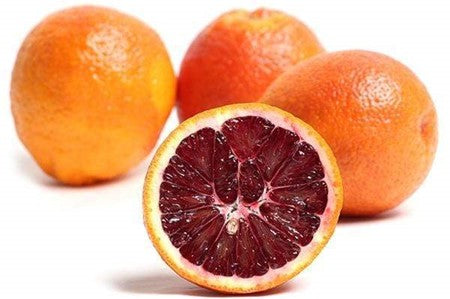
Blood Oranges
Melissa’s Blood Oranges are currently grown in California. These delicious sweet oranges get their name because of the red juice that turns the flesh, and sometimes the rind, a deep “blood” red. The juice is delicious and often served in fine restaurants instead of regular orange juice. Most blood oranges are seedless, but some varieties contain seeds.
Blood oranges are best when kept in the refrigerator and eaten within several days of purchasing.
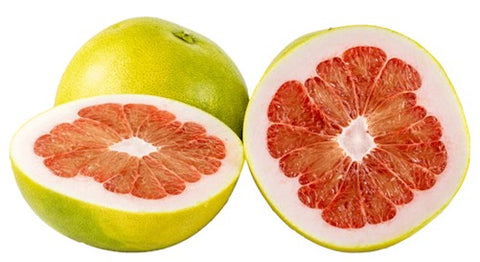
Pummelos
The pummelo is sometimes referred to as a Chinese Grapefruit or “shaddock” is a native fruit to Southeast Asia. Pummelos are often thought of as a “good luck” fruit, especially during Lunar New Year. They are thought to be a distant relative of a common grapefruit. Pummelos have a very thick rind with a fruit about the same size as a regular grapefruit in the center. They are delicious as a snack or even as juice.
Pummelos should be eaten as fresh as possible for the best flavor. They can be kept refrigerated or at room temperature.

Kumquats
Originally introduced in the mid-19th century to the U.S., this ancient fruit has been familiar in Japan and China for thousands of years. These tiny citruses are bright orange and shaped like an egg. They are completely edible. The sweet, thin rind offsets the tart flesh. They are great as a snack or even candied. Kumquats are generally available year-round with a few gaps in growing regions.
Kumquats are best when kept refrigerated. They should have bright skin with no blemishes.
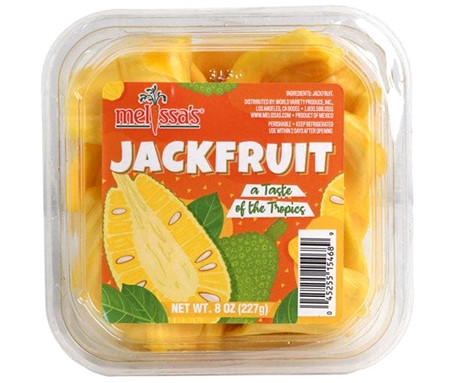
Jackfruit Pods
Convenient and ready-to-use, Melissa’s new Jackfruit pods take all the work out of preparing fresh jackfruit. No mess, but all the delicious goodness. Use jackfruit in place of chicken or beef in recipes, or eat it right out of the package!

Strawberry Papayas
Melissa’s strawberry papayas are the sweetest, most flavorful of all papayas. They are beautiful green on the outside, with a salmon-pink inner flesh. They are very fragrant and juicy. Strawberry papayas are delicious when cut in half and the flesh scooped out… great in fruit salads, tropical drinks or even grilled. Papayas also make a delicious marinade as they can help tenderize meat. Try them sliced for breakfast, or scooped over ice cream for dessert… any way you eat them, you will love them!
Strawberry papayas are available year-round. They can be stored at room temperature to ripen, then moved into the refrigerator until ready to eat.
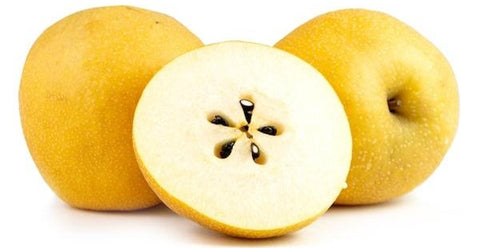
Asian Pears
Asian pears are thought to be a cross between an apple and a pear, when actually they are closely related to a pear. They taste very similar to a pear, but resemble an apple, which is where the name derived. There are hundreds of varieties of Asian pears available today, making them available just about all year around. They are delicious eaten out of hand, firm and crunchy with plenty of quenching juice. Asian pears are great on fruit platters, in salads, in pies, or desserts, or wherever you may use an apple.
Most Asian pears will last about 30-60 days when refrigerated, but it is always best to eat as soon as possible. Store them in the refrigerator, wrapped carefully so they will not bruise. Asian pears are handpicked and individually wrapped to prevent any bruising in shipping.

Cherimoyas
Also called Custard Apple or Custard Fruit, this delicious heart-shaped fruit is a delicacy. They are a hand-pollinated fruit, which makes them a time-consuming commercial crop. However, since they are grown in so many areas now, supply is not a problem. The flesh of the cherimoya is cream-colored with large, black, inedible seeds. They have a flavor similar to a blend of strawberry, mango and pineapple. To eat one, simply cut it into wedges and spoon out the creamy flesh, while discarding the seeds. They are generally eaten as is, but they can also be used in drinks, fruit salads or desserts.
Cherimoyas should be kept at room temperature until ripe. You’ll know the fruit is ripe when it darks from green to brown. Fruit can be stored in the refrigerator for a few days after ripening.
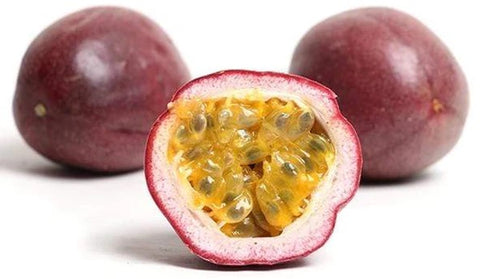
Passion Fruit
Passion Fruit originated in South America, most likely Brazil. Now, passion fruit is grown worldwide. Passion fruit comes from the passion flower, which is a beautiful tropical flower with a wonderful fragrance. Passion fruit is generally purple but can also be golden and has a jelly-like golden flesh filled with soft edible seeds. Passion fruit looks like an egg, with a thick, hard shell that gets wrinkled as it ripens (the more wrinkles, the better the fruit will be). Contrary to popular belief, Passion Fruit is named for the bloom of the Passion Fruit flower. This bloom is thought to symbolize various parts of the Passion of Christ (such as the crown of thorns and the nails of the crucifixion) and not because of passionate powers it was once believed to contain. Passion Fruit is generally eaten fresh but may be cooked for use in sauces and fillings. Simply halve fruit and scoop the pulp and seeds with a spoon.
Passion fruit can be purchased with smooth skin for use later, or with wrinkled, dimpled skin for immediate use. The more wrinkles, the better it will taste! Passion fruit can be frozen once the flesh is removed from the shell. It is best stored at room temperature.
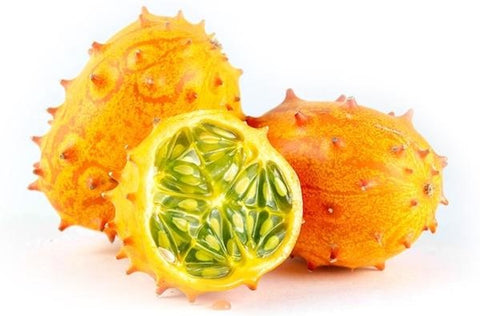
Kiwano Melons
Also known as the African Horned Melon, this very interesting piece of fruit contains a lime green, jelly-like inside, with the texture of a cool cucumber and taste with a hint of cucumber, banana, melon and lime. The outer shell is spiky golden-orange and is often used as a serving dish filled with fruit salads, dips or other delicious recipes. Kiwano melons are also used to create exotic tropical drinks or delicious sauces for seafood, poultry and vegetables.
Kiwano melons last for several weeks without refrigeration from their initial picking. Once they “give” to the touch, they are ripe and ready to eat. Do not store them near apples or bananas, as these fruits will shorten their shelf life.
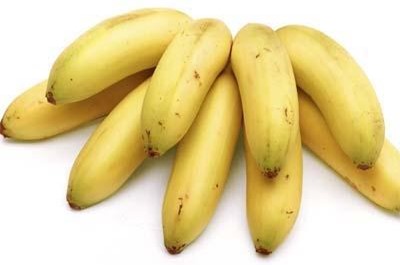
Baby Bananas
Also called niño, ladyfinger, or finger bananas, baby bananas are somewhat smaller than even the most popular yellow Cavendish banana, and are actually sweeter. They are native to tropical countries like Central and South America, the Caribbean and Mexico. Familiar in Latin American, African and Asian cooking, baby bananas are amazingly versatile. Shaped like a miniature slender banana, this small, crunchy specialty banana is usually eaten out of hand or sliced raw in fruit salads.
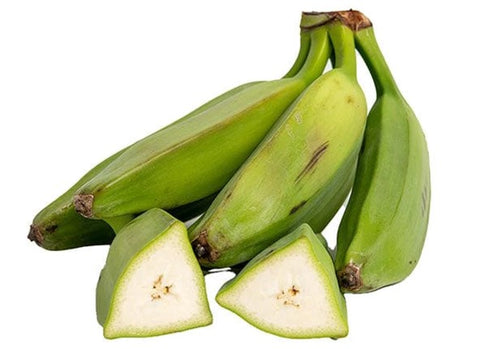
Burro Bananas
The shape of this banana is flatter, smaller and square, yet just as versatile as other bananas. The burro banana is described as having a tangy lemony flavor. Once ripe, the soft flesh is creamy white or yellow with some firmness toward the center. Used when firm, the burro banana can be sliced and added to cereals or made into banana chips. The burro, softened, can also be mashed and used in cake and other dessert recipes.
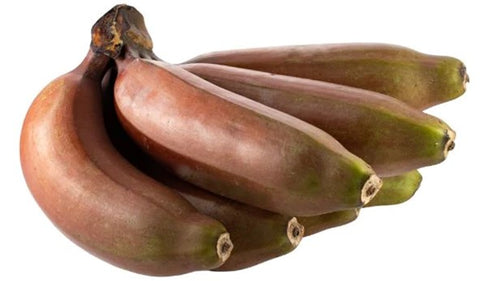
Red Bananas
A sweet banana with a touch of raspberry flavor, the short and plump red banana is easy to distinguish. The slightly pink and creamy flesh within a reddish-purple skin is often used to add flavor and color to many dishes. Similar to the traditional banana, this tropical fruit is imported from Central America, generally Ecuador. Red bananas are great in fruit compotes and salads or used in baking as you would any banana.
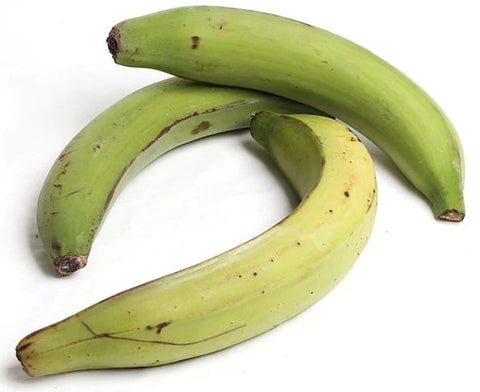
Plantain Bananas
Larger and firmer than dessert bananas, plantains are commonly used as vegetables rather than fruits because of their lower sugar content. Extremely popular in Latin American countries, plantains are also favored in West Indian and African cooking. Plantains are rarely eaten raw unless completely black to ensure ripeness, and are usually baked or fried and served like a potato. These “cooking bananas” have a mild, squash-like flavor and are used in a wide range of savory dishes.

